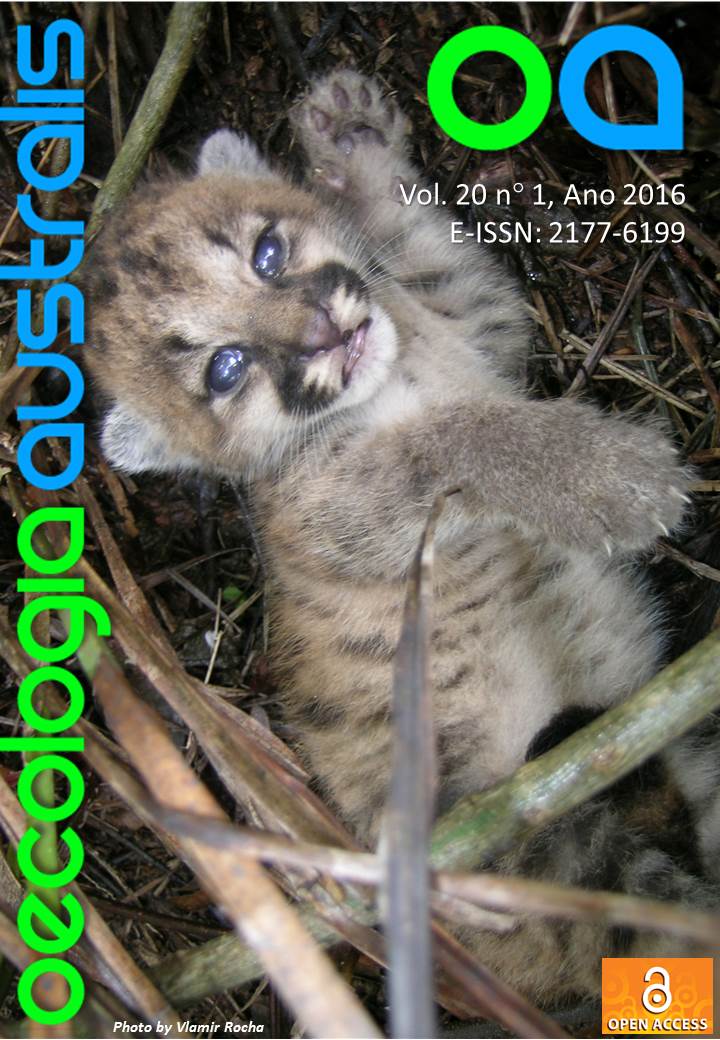BUGIO-RUIVO (PRIMATES, ATELIDAE) EM CAMPOS DE ALTITUDE E COM ANOMALIA NA COLORAÇÃO NO PARQUE NACIONAL DO ITATIAIA, SUDESTE DO BRASIL
DOI:
https://doi.org/10.4257/oeco.2016.2001.10Palavras-chave:
Alouatta guariba clamitans, leucism, Mantiqueira MountainsResumo
The occurrence of Alouatta guariba clamitans in the Itatiaia National Park (PNI) are considered rare. For over 70 years an epizootic outbreak of yellow fever almost caused the local extinction of this species and since then only one record by direct observation was obtained. In this study, records were obtained by direct observation of a group of four adults, one male and three females, and an infant in forest environment (ca. 1200m). One of the females presented anomaly in the coloration, characterized as leucism. A record of solitary adult male was held in high altitude grasslands (2450m). It is possible that the fault is related to the low density of the species, similar to that reported in other studies. The case record in high altitude, which can be considered the highest for primates in the country, suggests expanding the occurrence of possibilities and use area for the species. The monitoring of this species is to be continuously executed, including higher areas, in order to obtain accurate estimates of density. The performance of activities for its conservation, such as the translocation of individuals from surrounding areas to the PNI should be assessed, to avoid their possible local extinction.Downloads
Arquivos adicionais
Publicado
2017-02-23
Edição
Seção
Notas Científicas


